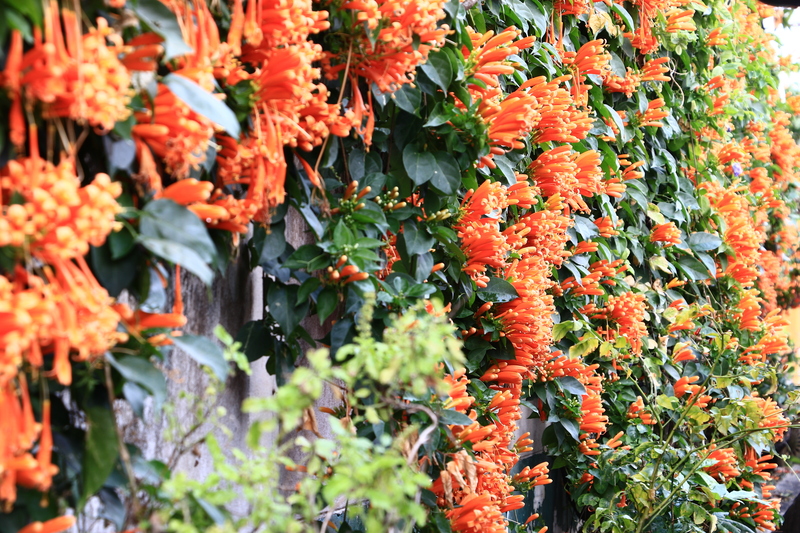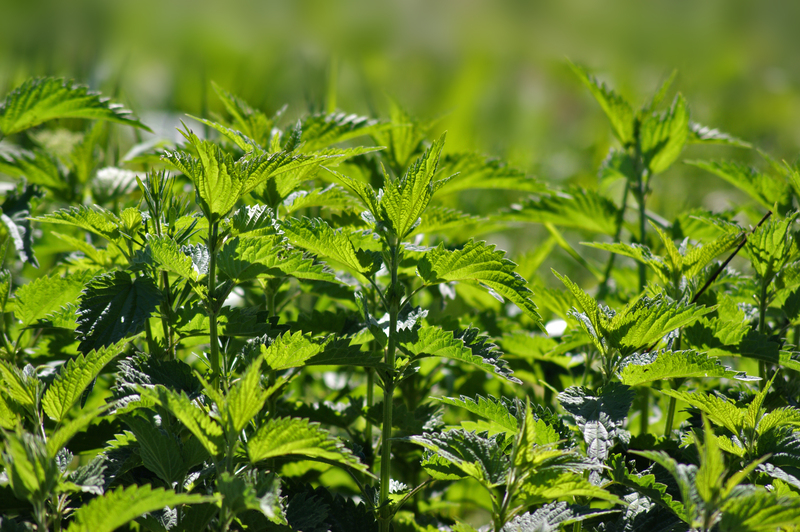Designing an Enchanting and Productive Herb Space
Posted on 16/06/2025
Designing an Enchanting and Productive Herb Space: A Comprehensive Guide
Cultivating your own herbs promises more than just fresh flavors in the kitchen; it offers a sensory, magical escape right at home. Whether your goal is to create a vibrant herb garden outdoors, set up an indoor container oasis, or integrate aromatic plants into your landscape, designing an enchanting and productive herb space is a rewarding endeavor. In this in-depth guide, we'll explore the essentials, best practices, creative design tips, and expert advice to help you establish a lush, bountiful, and aesthetically pleasing herb sanctuary.
Why Have a Dedicated Herb Garden?
Herbs have been cherished for centuries for their culinary, medicinal, and ornamental value. A well-organized herb space is more than a mere collection of plants--it's a haven for relaxation, experimentation, and connection with nature.
- Culinary Diversity: Fresh herbs elevate flavors and introduce variety to daily meals.
- Sensory Experience: Colors, textures, and aromas make the garden a delightful retreat.
- Sustainability: Grow your own seasonings and reduce reliance on store-bought produce.
- Pollinator Support: Many herbs attract bees, butterflies, and other beneficial insects.
- Medicinal Uses: Use homegrown herbs for teas, tinctures, and natural remedies.

Planning Your Enchanting and Productive Herb Space
Careful planning is the foundation of any successful herb garden design. Consider the following steps to maximize outcomes and create an engaging space.
1. Assess Your Available Space
- Outdoor Ground Beds: Ideal for expansive gardens or yards.
- Raised Beds: Excellent for better soil control and accessibility.
- Containers and Pots: Perfect for balconies, patios, or windowsills.
- Vertical Gardens: Great for maximizing small spaces or adding dimension to walls and railings.
2. Evaluate Sun and Soil Requirements
Herbs generally thrive in full sun--aim for at least 6-8 hours of direct light daily. Some, like parsley, mint, and cilantro, tolerate partial shade. Ensure your soil is:
- Well-draining (herbs dislike soggy roots)
- Enriched with organic matter
- Neutral to slightly alkaline pH (6.0-7.5 is optimal for most herbs)
3. Choose the Right Herbs for Your Needs
Plan your herb selection based on intended use and local growing conditions. Some popular productive herbs include:
- Basil: Ideal for pesto, salads, and Italian dishes
- Mint: Refreshing for teas, desserts, and cocktails--best confined due to spreading roots
- Thyme: A resilient flavor enhancer for soups and roasted dishes
- Rosemary: Woody, fragrant, and long-lived; perfect for grilling
- Chives: Easy to grow; brings a mild onion flavor to savory dishes
- Cilantro/Coriander: Essential for salsas and curries (best grown in cooler seasons)
- Lemon Balm: Bright citron notes for infusions and calming teas
- Dill: Pairs excellently with fish, potatoes, and pickles
4. Plan for Year-Round Productivity
Combine perennial herbs (such as sage, rosemary, thyme, oregano, chives, and mint) with annuals (such as basil, cilantro, and dill) to ensure continuous harvest throughout the seasons.
Creative Design Strategies for a Magical Herb Space
Imbuing your herb garden with charm and magic is all about thoughtful arrangement, creative features, and personal touches. Consider these strategies as you design your enchanting and productive herb corner.
A. Define the Garden Layout
- Spirals: A classic herb spiral maximizes vertical planting, aids drainage, and creates microclimates for different plants.
- Formal Beds: Boxed or geometric patterns add structure and elegance.
- Cottage Style: Blending herbs with colorful flowers offers a romantic, whimsical feel.
- Pathways: Meandering stone or brick paths invite exploration and easy harvesting.
B. Integrate Visual and Sensory Elements
To create an enchanting herb garden:
- Use Decorative Containers: Terracotta, ceramic, or repurposed vintage vessels add charm.
- Install Garden Art: Adorn with statues, wind chimes, or fairy lights for magical vibes.
- Layer Heights: Mix tall and trailing herbs for dynamic visual interest.
- Add a Water Feature: Fountains or birdbaths attract birds and create a soothing ambiance.
- Scent Trails: Plant fragrant herbs along paths or entryways; brushing against lavender or mint releases their heavenly aroma.
C. Companion Planting for Abundant Growth
Smart grouping of herbs and companion plants boosts productivity and keeps pests naturally in check.
- Basil + Tomatoes: Basil repels tomato hornworm and can enhance tomato fruiting.
- Rosemary + Sage: Both deter carrot flies and cabbage moths.
- Thyme + Strawberries: Thyme attracts beneficial pollinators to berry plants.
- Chamomile + Everything: Chamomile improves the health and flavor of neighboring herbs.
D. Vertical Gardening Solutions
Lack of horizontal space shouldn't limit your dreams. Use vertical planters, wall-mounted pots, or hanging baskets to grow a productive herb garden in the tiniest footprints--ideal for apartments and urban dwellings.
Ensuring Productivity: Care Tips and Best Practices
The secret to a flourishing and enchanting herb space lies in regular care and a few expert strategies. Here's how to keep your herb plants thriving season after season.
1. Watering Wisely
- Most herbs prefer consistently moist but not waterlogged soil.
- Water in the early morning to reduce evaporation and prevent disease.
- Mulch to keep soil cool and moist in the heat.
2. Fertilizing and Feeding
Avoid overly rich compost or fertilizers, which can lead to lush foliage with diminished flavor. Opt for balanced, organic feeds applied sparingly.
3. Pruning and Harvesting
- Regularly pinch or snip herbs to promote bushiness and extend productivity.
- Never cut more than one-third of a plant at once; this allows it to recover without stress.
- Harvest herbs in the morning, when essential oils are most concentrated, for best flavor and aroma.
4. Managing Pests and Diseases
- Plant pest-repellent varieties--like lavender or sage--near vulnerable plants.
- Keep air flowing with proper spacing to prevent fungal diseases.
- Use natural solutions (like neem oil or insecticidal soap) for any infestations.
Seasonal Maintenance and Year-Round Enjoyment
To truly capture the enchanting magic of your herb garden, make it a year-round destination and learning hub.
Spring
- Start new annual herbs from seed, both indoors and directly outdoors after frost.
- Prune perennials to encourage new, healthy growth.
Summer
- Harvest regularly to prevent bolting and promote continued leafing.
- Watch out for dry spells and pests.
Fall
- Dry or freeze herbs for winter use.
- Mulch perennials to protect them from harsh cold.
Winter
- Bring tender herbs indoors, place them on sunny sills.
- Plan changes for next season, order new seeds, and dream up magical design tweaks.
Incorporating Herbs into Everyday Living
Your enchanting and productive herb space is an invitation to enhance daily experiences in delightful and unexpected ways.
- Culinary Use: Add handfuls of fresh herbs to sauces, salads, marinades, and soups for ultimate flavor impact.
- Herbal Teas: Brew lemon balm, mint, and chamomile for calming, aromatic brews.
- Beauty and Self-Care: Craft herbal balms, infused oils, or soothing bath sachets.
- Natural Remedies: Prepare tinctures, salves, and poultices for natural wellness.
- Home Fragrance: Dry lavender or rosemary bundles to scent closets and linens.

Expert Tips for Creating an Enchanting and Productive Herb Garden
- Personalize the Space: Add a cozy bench, a unique trellis, or decorative stepping stones to make your herb garden a true retreat.
- Practice Crop Rotation: Cycle your annual herbs and vegetables to keep soil healthy and avoid pest build-up.
- Label Your Plants: Use attractive plant markers to identify your herbs and add a whimsical touch to the garden.
- Experiment: Try unusual herbs--such as stevia, curry plant, or lovage--for unique flavors and enchantment!
- Invite Nature: Add a bee hotel, small pond, or bird feeder to encourage beneficial wildlife and pollinators.
Conclusion: Cultivating Your Own Magical and Productive Herb Haven
A thoughtfully designed herb garden is much more than a planting space; it becomes a place of inspiration, health, beauty, and relaxation. By planning the layout, choosing diverse and useful herbs, and infusing your personal style, you'll create a uniquely enchanting and productive herb sanctuary. Start small or go grand--either way, the rewards are boundless. Gather fresh sprigs for your cooking pot, unwind among fragrant foliage, and savor the simple joys of gardening magic at home!
Ready to start designing your own enchanting and productive herb space? Let your imagination bloom, and may your garden always inspire wonder.

